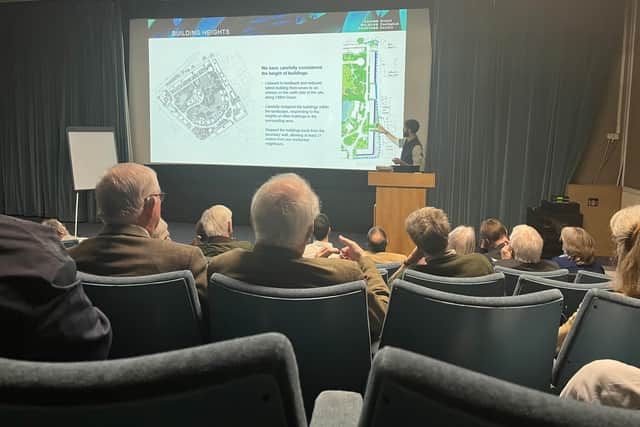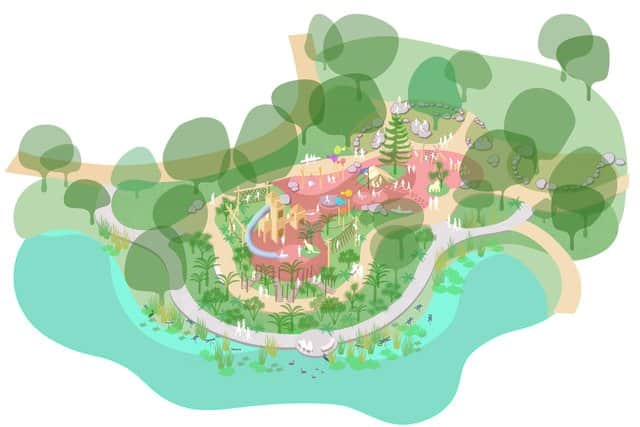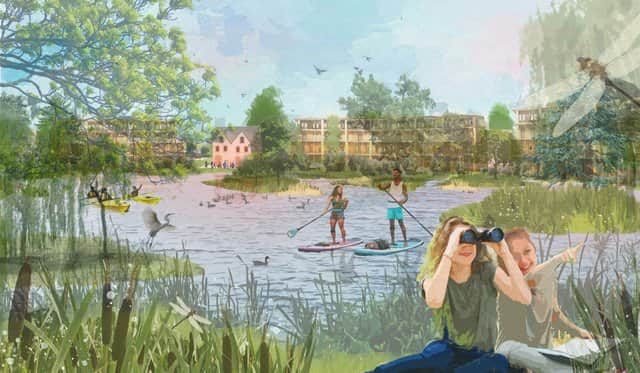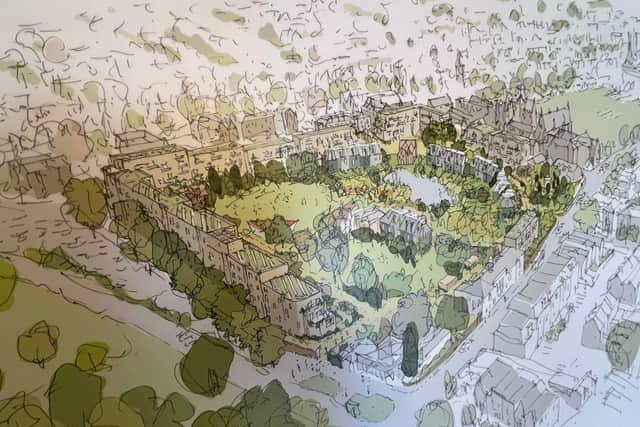Bristol Zoo: Concerns over new housing and plans to open gardens for free discussed at public meeting
and live on Freeview channel 276
A huge project to build hundreds of new homes at Bristol Zoo Gardens while opening the historic site to the public won’t be completed until at least 2027.
A rough timeline for the development was revealed at a public meeting about the plans on Thursday afternoon (March 24) at the Clifton Pavilion.
Advertisement
Hide AdAdvertisement
Hide AdBristol Zoo’s 186-year-old presence in Clifton will come to an end in September before the attraction packs up and moves to its Wild Place site in South Gloucesteshire, a move that bosses at Bristol Zoological Society say is crucial for the zoo’s survival.
The Society wants to build housing on its Clifton site to provide additional income for Wild Place and is in the process of selling its West car park for this purpose, while a planning application for housing at Bristol Zoo Gardens is expected to be submitted in around a month’s time.


The latter proposals include opening Bristol Zoo Gardens to the public for free, transforming the ticket office into a conservation hub and café and maintaining monuments such as the Monkey Temple, Aviary and Bear Pit.
At the meeting Edward Phillips, landscape architect at Land Use Consultants, said: “It’s important to keep in mind that the site was a garden first and the animals came later.
Advertisement
Hide AdAdvertisement
Hide Ad“The gardens are a fantastic cultural treasure and it’s important we maintain them.
“This is going to be a public asset, and free. I don’t think the gardens have been free to enter since something like 1936.”
The meeting was attended by dozens of residents, not all of whom were happy about the changes and how they may affect the residential area that surrounds the site.
The Society’s plans, relating to the new housing in particular, have faced backlash from some residents and organisations, including OurWorld Bristol which last year launched a counter-plan for the gardens in the form of a ‘virtual reality’ zoo.
Advertisement
Hide AdAdvertisement
Hide AdOne resident who lives on Pembroke Road raised concerns that the height of the new buildings would block sunlight from the houses that line the space, and went as far as to slam the development as ‘unkind’ towards those ‘left behind’ when the zoo vacates.
Francesca Fryer, director of transformation at Bristol Zoological Society, answered that the heights of the new buildings on the north side of the site had been reduced from seven storeys to six off the back of feedback received from residents.
Geraint Jones, planning consultant at Savills, added: “Throughout the planning process we always take into account privacy, building height and impact on daylight and sunlight.


“We’re looking at all those things very carefully but that conversation is going to continue throughout the application process.
Advertisement
Hide AdAdvertisement
Hide Ad“There are lots of demands to push and pull this scheme but we’re getting to a point where we feel we have a reasonable balance.”
In total, 206 homes would be created at the site including 22 new build family houses and 162 new build apartments.
Meanwhile historic buildings dotted around the site, such as the Clock Tower and Pavilion, would be restored and converted into housing.
42 of these homes (20%) would be affordable, 75% would be offered at social rent and 25% would be offered under a ‘first home’ scheme.
Advertisement
Hide AdAdvertisement
Hide AdAnother resident asked about the timeline of the project and was told by Ms Fryer that, should the plans be given the green light, building would not commence on the site until 2024.
When asked how long a development on this scale would take to finish in her experience, Ms Fryer responded: “In my experience, about three years.”
Questions were also asked about who would be assigned to manage the gardens, which would be closed during the night once opened to the public.
Ms Fryer said that the Society would create a ‘management board’ consisting of representatives from the Society, cultural organisations and chosen developer, along with a locally-elected representive.
Advertisement
Hide AdAdvertisement
Hide AdThe management board would be able to apply for grants and decide what kind of events and activities would be held at the gardens.


She said: “We expect this proposal to go through with the planning application as a condition.
“Essentially the Zoo would still hold stewardship and that’s quite rare.
“It’s all part of trying to preserve our legacy in Clifton, which is also why we decided to lead on planning.”
Advertisement
Hide AdAdvertisement
Hide AdMs Fryer said that Bristol City Council had been approached about adopting the site but had declined, as the authority didn’t feel the it ‘would fit in’ with its portfolio.
She told BristolWorld that the Society’s strategy is ‘much more informed and developed’ as it enters its third consultation over the site.
She said: “For example, we’re very clear on how the conservation hub is going to work and how that relates to the opportunity for arts and events to happen on the east lawn where we have a retained theatre building.
“We’ve identified how we’ll bring in newly-listed buildings like the Monkey Temple into the public realm and make this a really interesting and active space for people.
Advertisement
Hide AdAdvertisement
Hide Ad“We’re also clearer on the housing that will be built within the site will look like and where it will be, while starting to look at the materials that will be used, such as textured brick or something that creaters an ‘other-worldy’ feel.
“We’re very keen that we keep the sense of the magic of the gardens, so any houses that are built within it have to be really quite special and be of the place itself.
“We’ve also have the very significant addition of a wonderful new playground opening in the heart of the site, something that’s really missing in this area.
“It’s great to have the Downs, which is such a lovely, open space, but families don’t really have a public play area in the neighbourhood.


Advertisement
Hide AdAdvertisement
Hide Ad“We’ve been working with a number of key stakeholders like Bristol Council and Historic England and feel we’ve come to a good balanced resolution to most issues that have been raised.
“People are always going to have concerns but I think they understand the relationship between the development and the ability to offer a sustainable future to the gardens and the care that they need.”
A planning application is expected to be lodged with Bristol City Council in around a month.
Comment Guidelines
National World encourages reader discussion on our stories. User feedback, insights and back-and-forth exchanges add a rich layer of context to reporting. Please review our Community Guidelines before commenting.
